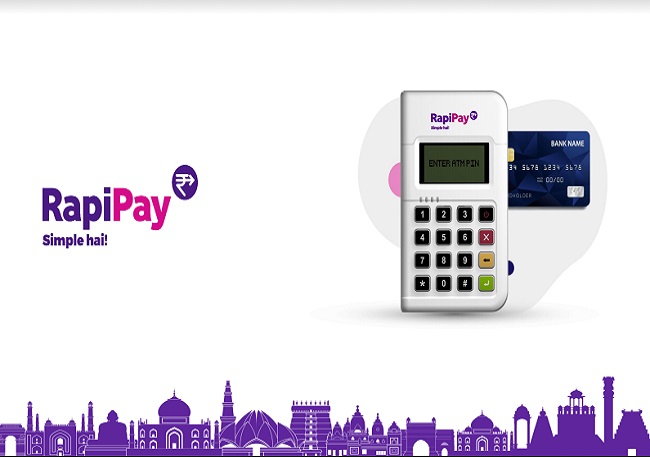Growth and Challenges: RapiPay Approaches Rs 440 Crore Revenue in FY23, but Losses Surge by 2.3X

Growth and Challenges: RapiPay Approaches Rs 440 Crore Revenue in FY23, but Losses Surge by 2.3X
Fintech startup RapiPay experienced significant growth, with a notable 78% expansion in revenue during the fiscal year 2022. However, the pace of its growth slowed down in the subsequent fiscal year. Nevertheless, the company achieved an impressive revenue of nearly Rs 440 crore during the fiscal year 2023.
RapiPay’s revenue from operations demonstrated an 18.3% increase, reaching Rs 439 crore in the fiscal year 2023, compared to Rs 371 crore in the fiscal year 2022. This financial data is based on the company’s annual financial report submitted to the Registrar of Companies. It’s worth noting that this growth follows a successful $15 million funding round that the Noida-based company secured at the end of the fiscal year 2022.
RapiPay’s comprehensive suite of banking and financial solutions has been strategically crafted to address the unique challenges faced by businesses, particularly MSMEs. Assisted payment services offered by RapiPay facilitate seamless transactions and payments for these enterprises, ensuring a smooth financial experience. Additionally, the company’s point-of-sale solutions empower businesses to efficiently handle customer transactions and manage their sales operations.
Furthermore, RapiPay’s focus on providing loans tailored for MSMEs underscores its commitment to supporting the growth and development of these vital economic contributors. By offering specialized loan products, the company aims to provide MSMEs with the necessary financial resources to expand their operations, invest in growth opportunities, and navigate the complexities of the business landscape.

RapiPay’s revenue generation model is predominantly based on earning commissions from the services it offers in the digital payment solution space. This revenue stream experienced a notable growth of 26%, reaching Rs 296.1 crore in FY23. The company’s ability to earn commissions from facilitating digital transactions highlights its effectiveness in providing value-added services to businesses and consumers in the payment ecosystem.
Additionally, RapiPay’s revenue was augmented by the sale of digital products, services, and devices. This category collectively contributed Rs 142.9 crore to the company’s overall revenue during the previous fiscal year. This diversified revenue approach underscores RapiPay’s commitment to exploring various avenues for income generation, catering to a broader spectrum of client needs within the digital payments landscape.
RapiPay’s strategic move to introduce the NYE super app reflects its commitment to offering a comprehensive suite of financial solutions to businesses. The NYE super app is designed to serve as a one-stop platform for a range of financial needs that businesses may have. By providing features such as salary and current accounts, payment solutions, retail and business loans, Buy Now Pay Later (BNPL) options, investment opportunities, and insurance coverage, RapiPay aims to streamline and simplify the financial management processes for businesses.
The integration of these diverse offerings into a single app not only enhances convenience for businesses but also showcases RapiPay’s dedication to being a holistic partner in their financial journey. This move aligns with the evolving landscape of fintech and digital banking, where comprehensive platforms that cater to various financial requirements are gaining prominence among businesses and consumers alike.

The significant role of service fees and commissions in RapiPay’s overall cost structure underscores their importance in generating revenue for the company. As the company’s revenues have grown, so have the associated expenses, which increased by 11.8% to Rs 360 crore in FY23. This growth in expenses is likely a reflection of RapiPay’s expansion efforts and its commitment to providing a wide range of financial services to businesses.
RapiPay’s focus on growth and expansion is also evident in the substantial increase in employee benefits, which surged by 2.7 times to Rs 114.2 crore in FY23. This includes the cost of employee stock options (ESOPs), which is a non-cash expense but highlights the company’s emphasis on talent retention and motivation. The commitment to providing ESOPs can be seen as a strategy to align employee interests with the company’s long-term growth and success, encouraging a sense of ownership and dedication among the workforce.
Legal and professional fees are a notable component of RapiPay’s expenses, indicating the company’s engagement with legal and regulatory matters, as well as professional services that support its operations and growth. The allocation of Rs 14.4 crore towards legal and professional fees underscores the importance of compliance and proper legal representation in the fintech industry, where regulatory scrutiny and legal challenges can play a crucial role.

The significant increase in total expenditure by 32.2% to Rs 538 crore in FY23 reflects the company’s investment in various areas to support its growth trajectory. As RapiPay expands its services and offerings, it’s natural for expenditures to rise as the company incurs costs related to operations, technology development, compliance, and more. This spending could also be associated with efforts to strengthen the company’s infrastructure, enhance customer experience, and ensure regulatory compliance in a rapidly evolving fintech landscape.
The increased expenses and investments made by RapiPay in its growth initiatives have had an impact on its financial performance metrics. The reported loss of Rs 93.2 crore in FY23, as compared to a loss of Rs 40 crore in FY22, indicates the company’s challenges in managing its costs and achieving profitability while scaling its operations.
The deteriorated Return on Capital Employed (ROCE) and Earnings Before Interest, Taxes, Depreciation, and Amortization (EBITDA) margins reflect the strain on the company’s financial efficiency and profitability. A negative ROCE suggests that the company’s capital investments are not generating sufficient returns, while a negative EBITDA margin indicates that RapiPay’s operating performance is not generating enough earnings to cover operating expenses.

Additionally, the fact that RapiPay spent Rs 1.23 to earn a unit of operating revenue in FY23 highlights the company’s cost structure and the challenge of achieving a favorable revenue-to-cost ratio. This could be indicative of the competitive nature of the fintech sector and the need for the company to find a balance between scaling its operations and managing its costs effectively to achieve sustainable profitability.
Source: https://entrackr.com/2023/08/rapipay-nears-rs-440-cr-revenue-in-fy23-losses-surge-2-3x/




